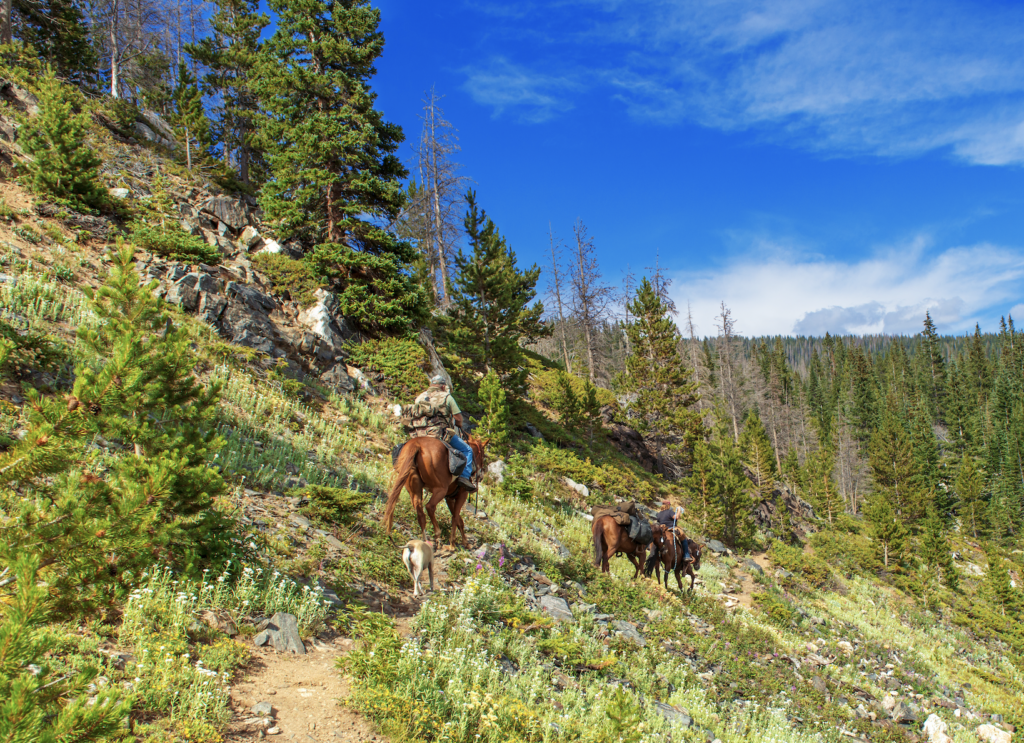Home > 5 things to take on a backcountry trail ride
5 things to take on a backcountry trail ride
- February 1, 2023
- ⎯ Editors of EQUUS
1. Communication devices.
Three types of electronics are useful in the backcountry. The most common are those that utilize cell service, like cell phones and the communication systems found in many vehicles. However, you cannot always rely on cell signals in wilderness areas. The second type of device uses GPS satellites to show you where you are; these do not enable you to communicate with anyone, but they can help you locate roads and other topological features around you. The third type of device is a combined location and communication tool that utilizes satellites. In addition to showing you where you are, they allow limited two-way communications, such as texts, to emergency responders. These can be expensive, but they are the most reliable devices in remote areas.
When you’re riding the trails, keep your phone or other devices in a pocket or fanny pack so they can help you if you’re separated from your horse. Having car chargers for all of your electronics is also essential.
2. A paper map.
Use a paper map as a backup and to familiarize yourself with the roads you intend to travel before you go. Be aware, though, that national forest maps are not always accurate. They may show roads that are no longer maintained, or you may encounter roads that do not appear on the map. Plus, there is no way of knowing from a map whether a road is passable for a vehicle towing a trailer.
3. Medications or other personal products.

Just as you would for any trip, make sure you keep any necessary drugs or products with you. For instance, if you have blood sugar issues and be sure to stocking your trailer and horse pack with some extra emergency items you might need.
4. Extra food and water.
Store some nonperishable food stored in the tow vehicle or tack room of your trailer. These provisions may be a godsend if you’re stranded for hours. Be aware, though, that it is never acceptable to leave food in a vehicle when you’re in bear country. Some trailheads have food storage lockers (called “bear boxes”) but many do not. Carrying extra food and water is a good idea in the wintertime, as well as the summers, in case you’re stranded by ice and snow.
5. Supplies for your horse.
Generally it’s a good idea to carry a little food for your horse to enjoy on the trip home from a ride, but you may also want bring along an extra flake of hay in case you are out longer than expected.





